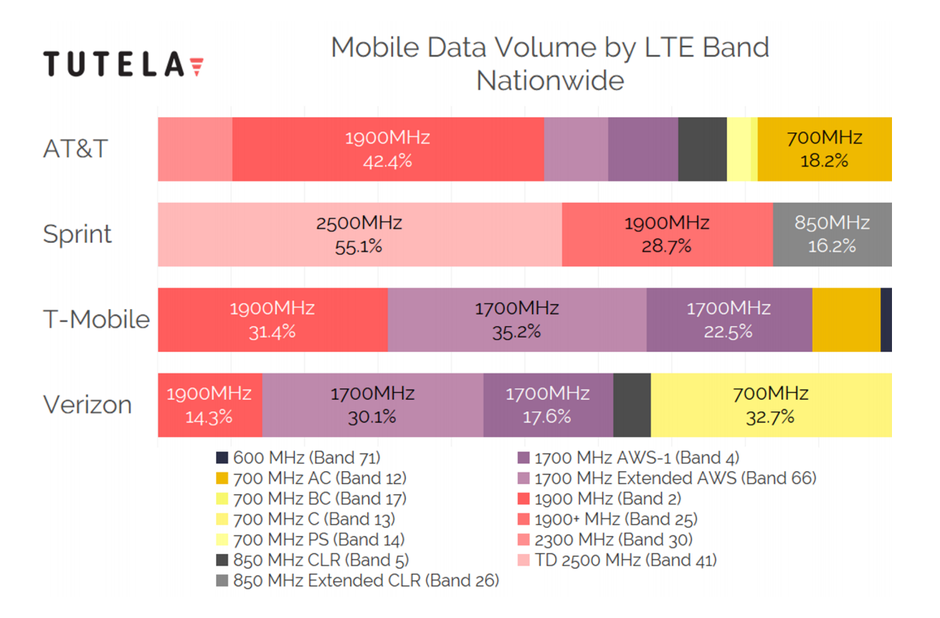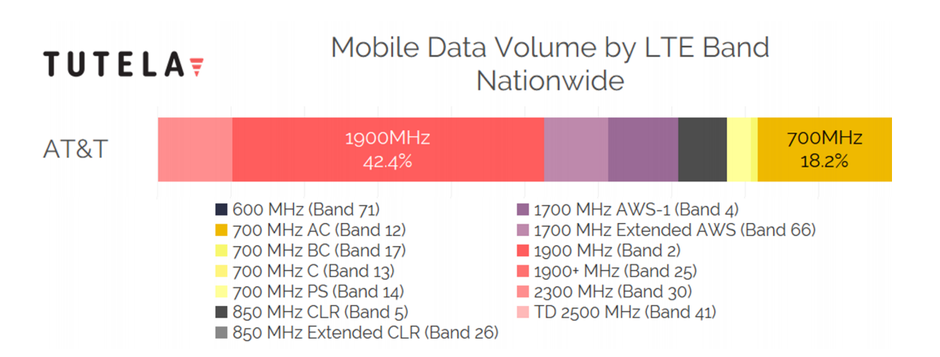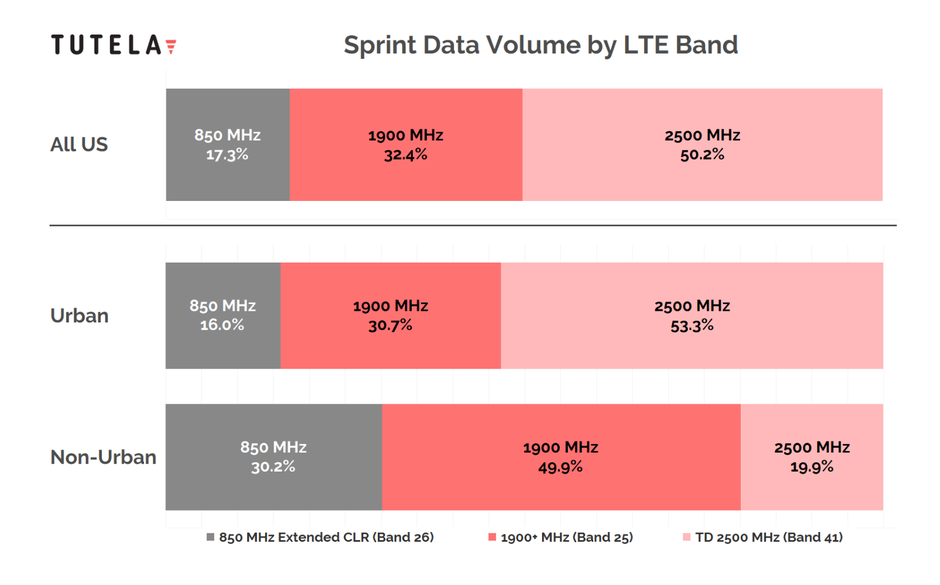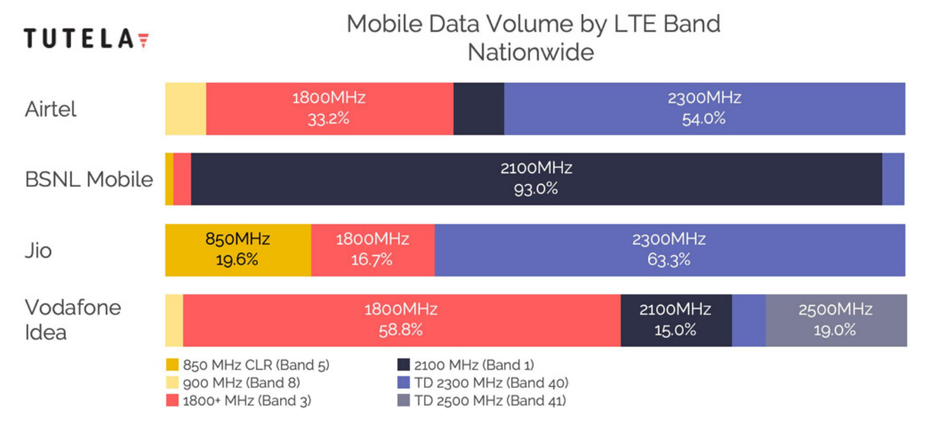How To Change Lte Band In Iphone

What are the 4G LTE bands supported by AT&T in 2019? Do they differ from the 4G LTE bands that T-Mobile uses? And what about Verizon Wireless massive 4G LTE network and its supported frequencies? And where is Sprint left in the 4G LTE picture?
If you have ever tried to understand what's the deal with 4G LTE band support, you would have inevitably stumbled upon a reality of limitations and restrictions. Many phones, for example, only support bands for a particular carrier and not for others.
We are breaking down the 4G LTE carrier bands for each of the major U.S. carrier (take a look at the table at the bottom of this article), but first, let's say a few words about the state of 4G LTE on all of them.
| Carrier | 4G LTE bands | Main frequencies |
|---|---|---|
| АТ&T | 2, 4, 5, 12, 14, 17, 29, 30, 66 | 1900, 1700 abcde, 700bc |
| Verizon Wireless | 2, 4, 5, 13, 46, 48, 66 | 1900, 1700 f, 700 c |
| T-Mobile | 2, 4, 5, 12, 66, 71 | 1900, 1700 def, 700 a, 600 |
| Sprint | 25, 26, 41 | 2500, 1900 g, 850 |
| Europe | 3, 7, 20 | 1800, 2600, 800 |
| China, India | 3, 40, 41 | 1800, 2300, 2500 |
*Main band for each carrier is marked in bold.
US 4G LTE carrier bands: the BIG picture

Mobile data volume as of September 2019, data by Tutela
As you can see in this bar chart, the vast majority of 4G LTE mobile data volume goes through mid-band spectrum. That would be the 1900MHz band 2 (B2) for AT&T; the 1900MHz B2 together with 1700MHz AWS bands B4 and B66 for Verizon; and pretty much the same combination of B2, B4 and B66 for T-Mobile. Those bands make the backbone of 4G LTE network coverage especially for urban areas.
In rural areas of the United States, the importance of low-band spectrum (below 1GHz) has a greater importance. Here, Verizon Wireless is particularly well invested with its 700MHz bands B13, B14, and B17. AT&T and T-Mobile, on the other hand, rely on 700MHz band B12. We will show you how the importance of low-bands rises in rural areas further below in this article.
AT&T LTE bands
What LTE Bands does AT&T use?

AT&T mobile data volume as of September 2019, data by Tutela
First, AT&T. The company has rolled out a massive 4G LTE network in the United States with support for bands 2, 4, 5 and 17, but the backbone of it remains band 17 in the 700MHz range, the company's primary band. From 2017, AT&T towers also support band 12 as per FCC requirements. Since band 12 is a superset of band 17, these are now commonly referred to as one entity (band 12), and again, are the backbone of the LTE network. These are the AT&T LTE bands used in 2019.
The remaining bands 2, 4 and 5 are mostly used in areas where AT&T does not have band 12/17, while in the densely populated metros, AT&T combines spectrum from multiple bands for better coverage. This is the reason why it is important that your phone supports all and not just one of these bands, in order for you to make maximum use of 4G LTE speeds.
Here is a breakdown of all the individual bands LTE bands that AT&T uses in 2019 and their role:
- Band 2 (1900MHz frequency range): a core AT&T LTE band with 20x20MHz blocks in most markets.
- Band 4 (AWS-1700/2100MHz): this AT&T LTE band is used as a supplement for improved capacity and is usually deployed in small, 5x5MHz blocks.
- Band 66 (AWS-3-1700/2100MHz): AT&T LTE band 66 is a superset of band 4, meaning that it includes all of the band 4 blocks plus adds a few more. AT&T usually deploys this in 10x10 chunks, and you could commonly see it in the New York and New Jersey areas. It is actively being deployed.
- Band 5 (850MHz): this AT&T LTE band is used most commonly 3G (HSPA+ ) connectivity, but some of it also goes toward LTE. AT&T owns a lot in this frequency range throughout the nation, and band 5 is sometimes used in areas where there is no band 12/17 coverage.
- Band 12/17 (700MHz): the backbone of AT&T's LTE network and it provides practically a nation-wide coverage.
- Band 14 (700MHz): AT&T has a nationwide license for band 14. The carrier acquired these bands from FirstNet and they will be used for a federally-funded public safety channel. These will only be deployed in states that opt in the FirstNet service.
- Band 29 (700MHz): this is a supplementary channel. AT&T purchased this from Qualcomm and it is mostly deployed in a 5x0 configuration, meaning that you get one small 5MHz block for download (in some limited places like the California coast and northeast you have 10x0 blocks). This band cannot be used for upload.
- Band 30 (WCS 2300MHz): another supplementary band for 4G LTE. AT&T has deployed chunks of 10x10 across the nation.
Verizon Wireless frequency bands
What LTE bands does Verizon use?

Verizon Wireless mobile data volume as of September 2019, data by Tutela
Verizon Wireless was the first to arrive to the 4G LTE race and it has also built its nationwide network based on 700 MHz spectrum, but the primary band for Verizon is band 13. Bands 2 and 4 are used to strengthen the signal in the densely populated urban areas. One important thing to note about Verizon Wireless is that many phones are built specifically for the carrier, including its 4G LTE bands. In other words, the common case is that you will not be able to use an AT&T device on Verizon's 4G LTE network.
Here is a detailed breakdown of the 4G LTE Verizon bands in use:
- Band 2 (1900MHz): A Verizon band is actively transitioning from 2G/3G for use for LTE. It is currently a supplementary carrier that brings more capacity to the network and is commonly deployed in 10x10 chunks.
- Band 4 (1700/2100MHz): This Verizon band has solid amounts of these bands that it deploys in larger, 20x20MHz blocks in many markets.
- Band 66 (1700/2100MHz): this is a superset of band 4 (meaning that it has all the frequencies of band 4, plus a few additional blocks). It is usually deployed in small chunks and it not available everywhere.
- Band 5 (850MHz): A Verizon band still in use for 2G/3G services in some markets, while for others, it is using this band for LTE. Verizon holds a lot of this spectrum nationwide and usually deploys it in 10x10 blocks.
- Band 13 (700MHz): A Verizon band that is the backbone of the Verizon Wireless 4G LTE network. Verizon has this rolled out to most markets across the nation, but since it is usually deployed in rather small 10x10 chunks, it could become congested fairly easily.
- Band 46: these are frequencies in the 5.9GHz spectrum that the carrier has started using as of 2020. This band is not widely deployed yet as of 2020.
- Band 48: this is CBRS band that is unlicensed yet but has been in use since September of 2019. This band is not widely deployed yet as of 2020.
Sprint bands
What LTE bands does Sprint use?

Sprint 4G LTE data by volume, breakdown as of December 2018
Historically, Sprint was one of the first carriers with a 4G network, but in the beginning, the carrier chose WiMax technology for its 4G network. A few years after that, the company had to change technology to the better established LTE technology.
Sprint's current 4G LTE network runs on bands 25, 26 and 41.
Here is a breakdown of the 4G LTE bands that Sprint uses and their importance:
Band 26 (800MHz): This low-frequency Sprint band is used for extra coverage and it covers a lot of the traffic in rural areas, plus it is used to improve coverage within buildings.
Band 25 (1900MHz): Sprint band 25 is a superset of band 2 that we are commonly seeing on other US carriers. Being a superset means that it includes band 2 frequencies plus some additional spectrum. It is deployed in different chunks in different regions, from 5x5 blocks to 15x15 blocks.
Band 41 (2500MHz): this Sprint band is different than the rest since it uses the TDD LTE technology rather than FDD LTE like everyone else in the US. What this means is that in this band you get higher allocation for the downlink stream than the uplink.
Interestingly, Sprint does carrier aggregation a bit differently than the rest of the carriers. Sprint uses "intraband" carrier aggregation (CA), meaning that it is aggregating the same LTE band (band 41 + band 41, for instance). In contrast, other carriers use "interband" CA, meaning that aggregation happens between two different frequencies (band 12 + band 4, for instance). One interesting consequences of this technology is that you usually end up connected to two channels on the same cell site, unlike with other carriers. Sprint used to call carrier aggregation Sprint Spark, but since the term was a bit confusing, they are now simply referring to areas with CA as LTE+.
T-Mobile bands
What LTE bands does T-Mobile use?

T-Mobile 4G LTE data by volume, breakdown as of December 2018
Finally, T-Mobile has been the loudest and arguably the fastest growing 4G LTE network, especially in the big cities.
Currently, T-Mobile's main band is still band 4 (AWS) in the 1700 MHz range. It is the band T-Mobile uses in densely populated areas and while it may not quite have the penetration capabilities that come with B2, it is considered more stable. Historically, T-Mobile used band 4 back in the times of HSPA+ networks and has later on repurposed the frequency for 4G LTE, plus it has added additional coverage to the band via the MetroPCS acquisition. Band 2, on the other hand, is used in markets where band 4 is not available, but the two are also aggregated for better coverage in markets, where both are available. You can typically see band 2 used in rural/suburban areas.
T-Mobile has also won a big, 30MHz chunk of spectrum in an auction held in summer of 2017. The frequencies that it is now allowed to operate are in the low-band, 600MHz band, and are referred to as 4G LTE band 71. Interestingly, band 71 uses old UHF TV frequencies, and it will be relying more on them in the future as TV stations clear them. At the end of 2018, there were over 800 cities and towns that support the new longer range band 71. These frequencies are also expected to become the base for T-Mobile's upcoming 5G network, while at the current time, they contribute the most to the company's small city and rural coverage. The full deployment of band 71 is expected to boost T-Mobile coverage by 6 million additional people.
Band 12 is similar to the newer band 71 in that T-Mobile describes both as "extended range LTE". The one key advantage of band 12 over band 71 is that it is available on many more phones. Band 71 is currently available on later models like the 2018 family of iPhones and it is the band that T-Mobile will be using to expand the network in the future.
And here is an overview of all the bands:
- Band 2 (1900MHz frequency range): this is a band mostly used in rural areas, or where band 4 is not available. It has higher reach, and it is widely used in the Northeast to provide 4G coverage to distant places. T-Mobile has deployed various chunks of spectrum, from smaller 5x5 blocks to larger and speedier 20x20 blocks. This band is also used for 2G and 3G.
- Band 4 (1700MHz/2100MHz): the backbone of T-Mobile's LTE network. This T-Mobile band is usually deployed in large 20x20MHz chunks in most markets, providing fast speed and a stable connection. Used for more densely populated areas.
- Band 5 (850MHz): Extremely limited use. Most band 5 coverage is offered by Verizon and AT&T. T-Mobile only operates LTE on this band around the Myrtle Beach, South Carolina area.
- Band 12 (700MHz): This is T-Mobile's "extended range LTE" band, used mostly as a complimentary band for coverage in rural and suburban areas, and it is similar to band 71 in function. It is supported on most phones.
- Band 66 (1700/2100MHz): an extension (superset) of band 4, this band is supported on devices since late 2016.
- Band 71 (600MHz): the big win of the FCC auction for T-Mobile, this band was previously used by UHF TV stations. T-Mobile band 71 is owned by the carrier all across the nation in big chunks, and will be deploying it in the near future. Since this is a 600MHz range band, it will have wider coverage and will improve coverage inside buildings. It is supported only by newer phones like the 2018 series of iPhones.
Europe, UK and China 4G LTE bands, 4G LTE support in phones
While the 700 MHz range in various bands has been the backbone of the U.S. 4G LTE coverage, in Europe and China carriers use different spectrum and bands, so phones from the United States may not work there.
4G LTE bands in Europe

4G LTE bands used by carriers in Germany
In Europe, most carriers base their networks on bands 3 (1800 MHz), 7 (2600 MHz) and 20 (800 MHz). Some carriers in the Old Continent use B1, and others also use B28, but the backbone of most carriers' 4G LTE networks are B3, B7 and B20. Of course, as you can see in the chart above, there are differences even between carriers. In the example of Germany, the local division of Vodafone relies heavily on low-band 800MHz B20 spectrum, while O2 and Telekom have built networks way more reliant on mid-band 1800MHz spectrum (band B3).
4G LTE bands in the UK

4G LTE bands used by carriers in the United Kingdom
In the United Kingdom, similarly, carriers differ quite a bit in their implementation of 4G LTE networks. UK carriers EE and 3 use mid-band and high-band spectrum most of the time which results in higher speeds, but lower coverage, while Vodafone and O2 use 800MHz low-band spectrum a lot more resulting in better rural coverage, but slightly slower overall speeds.
4G LTE bands in India

In India, the most common LTE bands are B3, B40, and B41. However, there are differences depending on the carrier. The largest carrier in India, Jio, bases its network on bands B3, B5 and B40, leaning much heavier on low-band 850MHz band B5 than other carriers. Vodafone Idea, on the other hand, uses band B40 very sparsely, and the majority of that network is build on B1, B3, B8, B41. And Airtel, the third-largest carrier in India, uses B1, B3, B8 and B40.
China, on the other hand, uses a whole different 4G LTE standard - while the Western world has rolled out FDD-LTE networks, China and large parts of Asia use TDD-LTE. The differences between FDD and TDD are purely technical and the main one boils down to the fact that FDD is symmetrical (1:1 upload vs download), while TDD allows variable up / down ratio. The main bands for China are TD bands 40 and 41. More recently, China has also reallocated bands B1 and B3 to be used for its 4G LTE networks.
How To Change Lte Band In Iphone
Source: https://www.phonearena.com/news/Cheat-sheet-which-4G-LTE-bands-do-AT-T-Verizon-T-Mobile-and-Sprint-use-in-the-USA_id77933
Posted by: millerdurstownsee.blogspot.com

0 Response to "How To Change Lte Band In Iphone"
Post a Comment